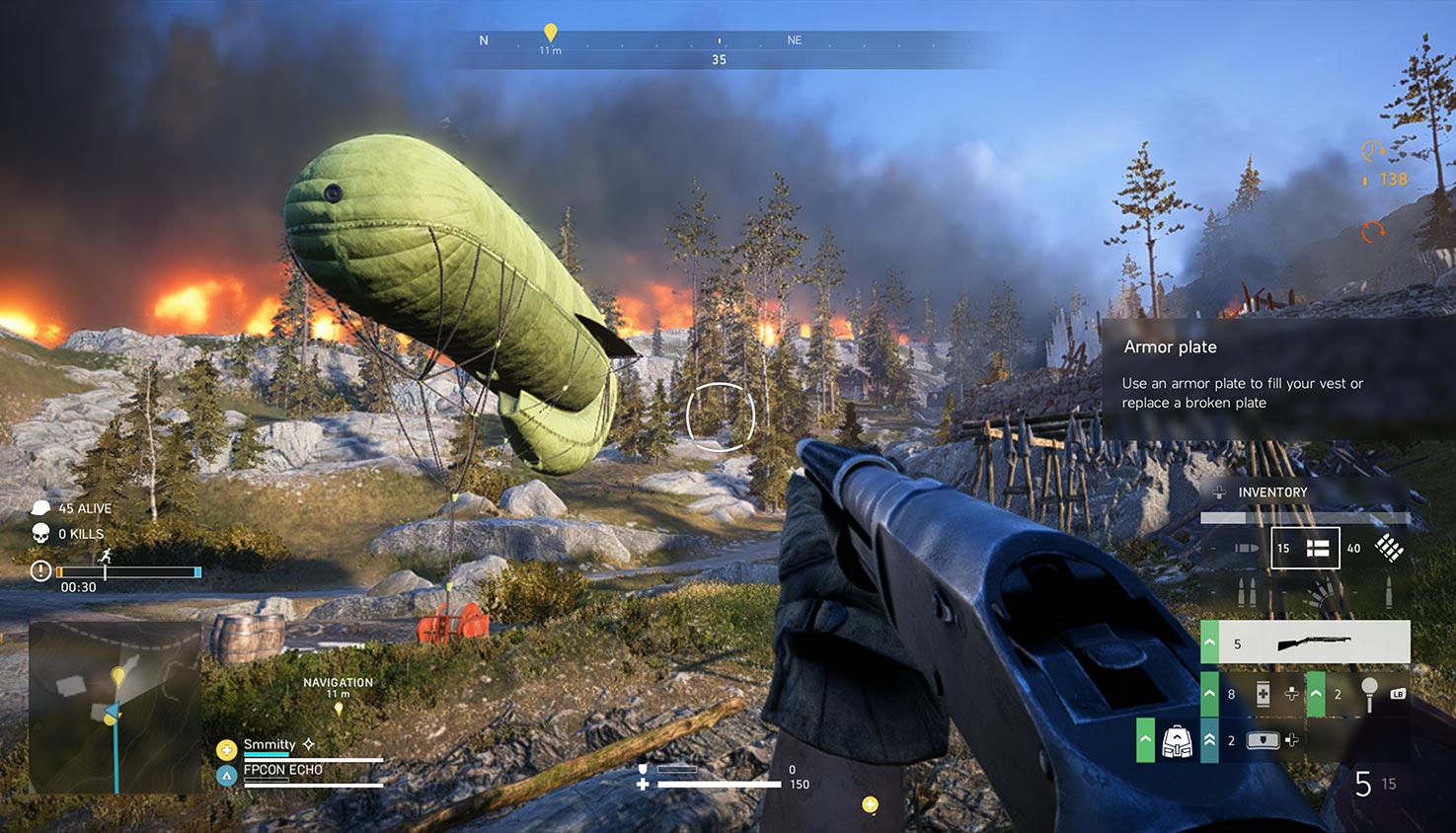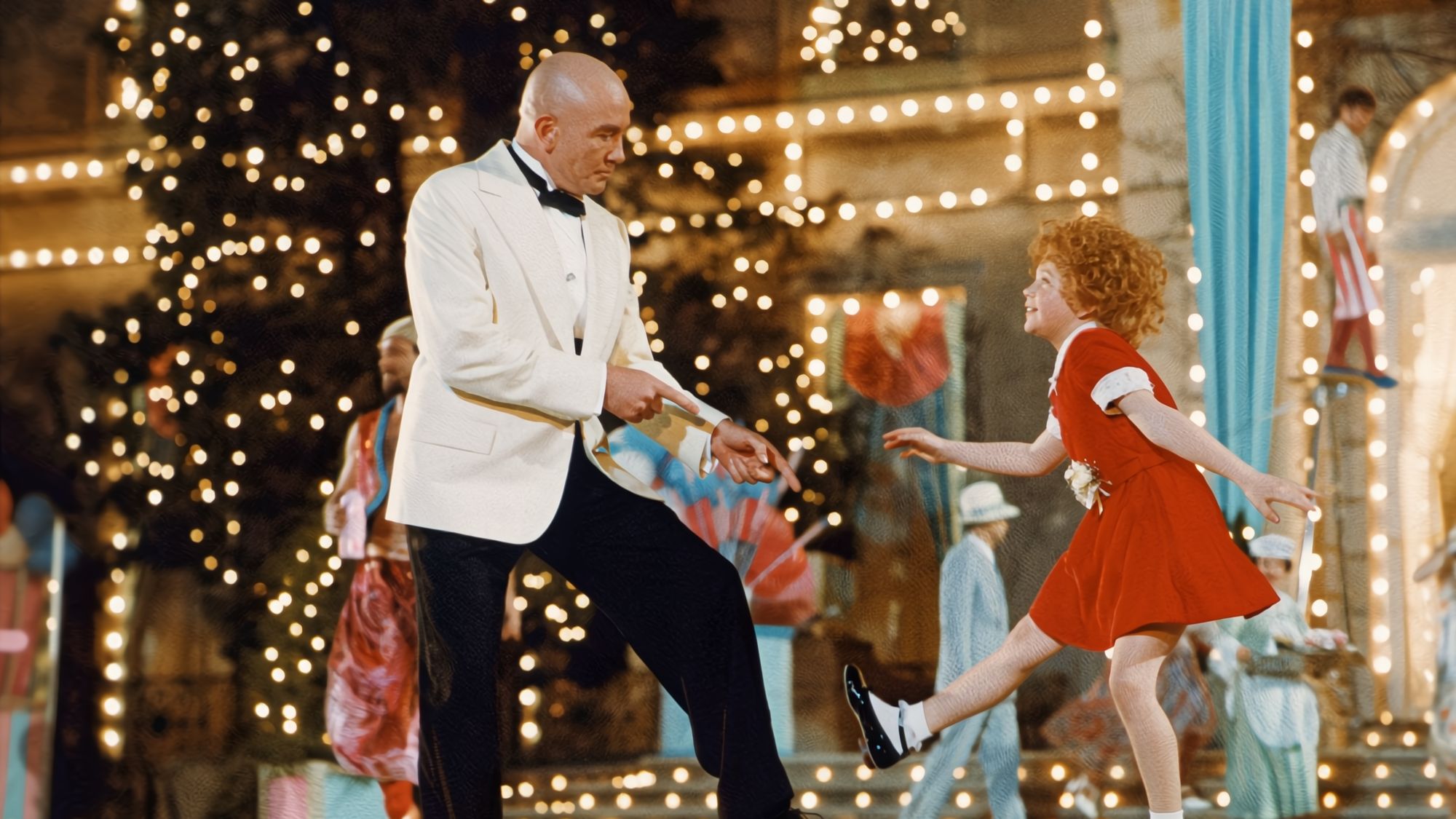Battlefield V Firestorm Just Became My Favorite Battle Royale
Battlefield V's battle royale mode Firestorm is finally available, but is it worth your time? Here are my initial impressions after around 10 hours of play.

My friend was drifting a few meters in front of another squadmate and myself. With the storm blazing at our backs, it was only a matter of time before he encountered another enemy squad fleeing toward the safe zone. Simultaneously realizing our mistake, we both made a beeline to our isolated soldier whose shouts for help over my headphones forming an eerie contrast to the still environment of the pre-fight battlefield.
But this is no savior story. By the time we got there, it was too late. Another squad of four had barrelled down the hill and eliminated our teammate, breezing their way from one lopsided fight to the next.
Fights like these aren't unique to Firestorm, but the succinct coordination between team members required to survive them make the battle royale game mode a match made in heaven for the Battlefield franchise. After all, Battlefield has, since its early days, encouraged teamwork by rewarding squad leaders and allowing members to revive each other. Those fine-tuned squad-based features, combined with stunning visuals, palpable gunplay, and first-rate audio, make Battlefield V's Firestorm mode one of the best battle royale games yet.
While Battlefield V comes out of the gate strong, there are plenty of areas that need improving, some of which are sure to turn players off. Still, with Firestorm, Battlefield V has become my go-to battle royale game. Here is what I like and dislike about Firestorm after playing around 10 hours of the game mode.
A Shaky Start
Before you jump into Firestorm, you'll be asked to play either by yourself, in solo, or with a squad. At launch, there is no option to play in teams of two, or duos. DICE, the studio behind the franchise, said duos would be coming to Battlefield V sometime in April, but for a "limited time." I can't quite wrap my head around why such a popular way of playing battle royale wouldn't become a permanent fixture, especially since it doesn't fundamentally change the mode.
As rewarding as it is to play in a squad of four, I'm much more likely to team with one friend rather than three at any given time. Yes, you can fill your squad with random players so you're at least not at a numbers disadvantage, but there is no guarantee that they won't go lone wolf on you. My advice to Dice and Criterion seems obvious: If you've done the work to bring duos to Firestorm, don't get rid of it.
Get instant access to breaking news, the hottest reviews, great deals and helpful tips.
MORE: The Best Gifts for Gamers
The other issues I've run into before even launching Firestorm are long wait times. While the game has gotten faster at pairing you with other squad members, my average wait time to get into a round is around 3 minutes. That might not sound so bad at face value, but when you drop into a swarm of enemies only to have your squad obliterated in seconds, the last thing you want to do is wait around to redeem yourself.
Closer to Apex Legends than Fortnite when it comes to player count, Battlefield V pits 64 players against each other on an ever-shrinking map. Criterion Games, the developer tasked to build Battlefield V's Battle Royale game mode, isn't reinventing the wheel; Firestorm follows the same plot as every other Battle Royale game --- loot, outlast and don't get caught in the storm. In the case of Firestorm, that storm is, you guessed it, a fast-moving wildfire.
MORE: The Best Headsets for Immersive Gaming
The fire works in the same way as storms in other Battle Royale games, like Fortnite and PUBG, slowly reducing your health until you reach safety. This central plot device looks gorgeous in Battlefield, but I found that it obscured my vision so much that I frustratingly got caught on rocks and other objects as I watched my health slowly sap.
A Gorgeous But Familiar Map
The map, named Halvoy, is visually breathtaking if a bit too conservative. At ten times larger than any Battlefield map, it'll take you dozens of hours to get familiar with every area of the battlefield. But don't worry, the map isn't so large that you won't encounter enemies. That's especially true because Firestorm limits the size of the map before the round even begins. Not only does that keep the action flowing fast, but it also means that every round feels different.
As expected, Firestorm looks outstanding. The nearly photorealistic environments are a big reason why Firestorm feels like a fresh battle royale experience. But I can't help but wish Criterion took more risks when designing the battlefield. It feels all too familiar, like a mish-mash of Battlefield V's Conquest maps. There are a few exciting points of interest, like the massive dig site called Pluto (warning, this Firestorm's Tilted Towers --- drop here at your own risk), but I wish there were a wider variety of environments in this gorgeous Scandinavian island.
Firestorm doesn't use classes in the same way as Battlefield's traditional game modes. Rather, the only differences between Medic, Recon, Support and Assault classes are aesthetic. Remember, this is a battle royale game --- you start out with nothing. Speaking of which, loot is scattered around the map and more heavily concentrated in 12 major locations.
Better Late Than Never
Looting feels a bit more difficult in Firestorm than in other games because you're required to look directly at an object before you can pick it up. That becomes a real problem in the middle of a firefight when every millisecond delay could be life or death.
Worse yet is how an enemy's weaponry and gadgets pile on top of each other once they're eliminated. This glaring oversight makes it nearly impossible to sift through the clutter to grab the stuff you actually need. Which brings us to the other main problem with Firestorm: the inventory system. There are simply too many button presses required to move ammo, weapons and gadget around your backpack.
Ammo is especially problematic because there are six different types, but you have limited space to carry rounds. If you have a rifle but no room to carry AR ammo, then you have to drop a different type of ammo from your inventory. This is similar to Apex Legends, but that game smartly displays a warning icon when you hover over ammo you don't need.
I can't count how many times I finished off an enemy, picked up their ammo-less gun and aimed it at another enemy only to fall victim to the ammo depletion TV trope. Another annoying mechanic requires you to reload a weapon every time you pick it up, even if you dropped it by accident.
Beyond those frustrations, gunfights in Firestorm feel as good as ever. There is a real meatiness to the weapons that you don't get in arcade-style games like Call of Duty or Fortnite and the game's exquisite audio adds another layer to the sensory overload provided by the beauty of the map. While the gameplay in Firestorm will feel familiar to Battlefield players, powerful gadgets, like impact grenades and artillery strikes, add some spice to gameplay that is starting to grow stale.
MORE: 8 Cheap Gaming Monitors (Under $150) Ranked from Best to Worst
Like in other battle royale games, guns are divided into tiers: common (green), rare (blue) and epic (red). Instead of having weak and strong weapons (a la Fornite), the colors in Firestorm determine perks to add-ons each type of weapon. For example, a blue, or rare, MP40 will have reduced recoil while an epic one adds a close-range lens sight. The information, however, isn't clearly defined within the game, which could cause unnecessary confusion, especially for new players.
Bottom Line
Overall, Firestorm is a welcome addition to Battlefield V, and one can only wonder where it'd stand in this growing field had EA and Dice make the right decision to release it at launch in lieu of the game's underwhelming single-player mode. Regardless, whether you've moved onto another game or never experienced the franchise before, Firestorm offers plenty of reason to return to the Battlefield.
Credit: Electronic Arts
Phillip Tracy is the assistant managing editor at Laptop Mag where he reviews laptops, phones and other gadgets while covering the latest industry news. Previously, he was a Senior Writer at Tom's Guide and has also been a tech reporter at the Daily Dot. There, he wrote reviews for a range of gadgets and covered everything from social media trends to cybersecurity. Prior to that, he wrote for RCR Wireless News covering 5G and IoT. When he's not tinkering with devices, you can find Phillip playing video games, reading, traveling or watching soccer.
